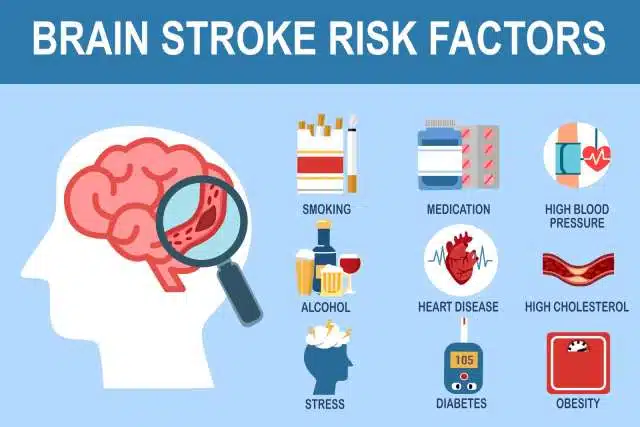
A stroke can happen to anyone at any time. While some risk factors are out of your hands, many can be managed through healthier choices and regular medical care.
Stroke risks you can control
Several common health conditions and lifestyle habits increase your stroke risk. Fortunately, many are preventable or manageable with proper care:
- High blood pressure
- Heart disease, including heart defects or irregular rhythms like atrial fibrillation
- Vascular disease, such as plaque buildup in arteries
- Diabetes
- High cholesterol
- Tobacco use (including vaping)
- Obesity
- Certain medications, including hormone therapies and birth control pills
- Illegal drug use
- Sleep apnea
Many of these conditions have no obvious symptoms. That’s why regular checkups with your primary care provider are essential to detect and manage hidden risks early.
Stroke risks you can’t control
Some factors influencing stroke risk are unavoidable. These include:
- Age: Risk rises after age 55.
- Gender: Men are generally at higher risk than women.
- Race and ethnicity: African Americans, Hispanics, Native Americans, and Alaskan Natives face higher stroke risks than Caucasians.
- Family history: A parent, grandparent, sibling, or child with a history of stroke increases your own risk.
- Prior strokes or heart attacks: Previous cardiovascular events sharply raise the likelihood of another stroke.
- Blood clotting disorders: Conditions that affect how blood clots also increase stroke risk.
Even if you can’t control these factors, being aware of them allows you to take extra precautions with your health.
Recognizing the signs of a stroke
Quick action is critical during a stroke. Use the acronym BEFAST to spot symptoms:
- Balance issues
- Eye changes (sudden vision problems)
- Face drooping
- Arm weakness
- Speech difficulty
- Time to call 911
“The sooner someone receives medical attention after a stroke, the better the chances for recovery,” said Dr. Donnelly.
If you or someone you know shows any signs of stroke, call emergency services immediately.
